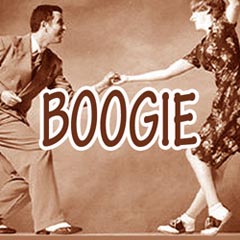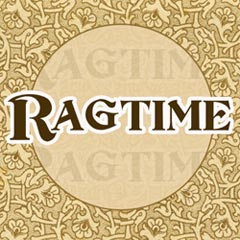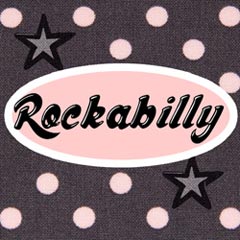Boogie-woogie
ON AIR - PROGRAMMING
The piano, an instrument of speed and perfection, parts from the blues to get people moving, giving it rhythm and dancing with the monotony and speed. Do you love the lively beat of Boogie-woogie? If so, don't miss your chance to tune in and enjoy this genre of music! With its peculiar "oom pah pah" that ingrains itself in the mind, it adds a hint of nostalgia to even the fussiest listener. In addition, the vibrant vocals work together with the syncopated rhythm that pulsates through your speakers and produces an infectious energy. Stop what you're doing and let Boogie-woogie's passionate beat do its workÑyou won't regret it! Boogie Woogie is a 1920s music style, a piano-based blues played by African-Americans. It is a music associated to dancing, with regular bass rhythm.
Get Your Feet Moving with the Lively Beat of Boogie-Woogie!
The sound of Boogie-Woogie is unmistakable. The fast-paced beat, the syncopated rhythm, and the vibrant vocals combine to create a genre of music that is both exciting and nostalgic. First popularized in the 1920s, Boogie-Woogie is a piano-based blues played predominantly by African-Americans. It's a style of music that's associated with dancing and has a regular bass rhythm that will get your feet tapping in no time. In this blog post, we'll explore the history of Boogie-Woogie, the key features that make it unique, and why it's still a popular genre of music today.
Boogie-Woogie had its roots in the blues. The music originated in the southern United States among African-American communities, and it quickly caught on in the early 20th century. The term Boogie-Woogie was coined to describe the sound of a train moving over tracks, and the music itself reflected that sense of movement and momentum. The style was initially played on guitars, but it didn't take long for the piano to become the dominant instrument.
One of the key features of Boogie-Woogie is its regular bass rhythm. This rhythm gives the music its driving energy, and it's what makes it such a popular genre for dancing. The bassline is typically played with the left hand, while the right hand plays melodic improvisations. This creates a unique style of music that's both structured and free-flowing at the same time.
Boogie-Woogie became popular during the Great Depression, when people were looking for an escape from their troubles. The lively beat and infectious energy of the music provided just that. It was often played in bars and clubs, and it quickly gained a reputation as music for the people. Even today, you don't need any special training to enjoy Boogie-Woogie – all you need is a pair of dancing shoes and a willingness to let loose.
But Boogie-Woogie isn't just a relic of the past. It's a musical style that has influenced many other genres, from rock and roll to jazz. Some of the most famous pianists in the world, such as Jerry Lee Lewis and Fats Domino, owe their success to Boogie-Woogie. And because the music is so versatile, it's still played and enjoyed today by music lovers of all ages.
In conclusion, Boogie-Woogie is a genre of music that's steeped in history and steeped in rhythm. It's a style that captures the spirit of a time when people needed to dance their troubles away, and it's continued to captivate audiences long after its initial popularity waned. So the next time you hear that familiar bassline and those syncopated rhythms, let your feet start moving and let yourself get lost in the music. You won't regret it!
Get Your Feet Moving with the Lively Beat of Boogie-Woogie!
The sound of Boogie-Woogie is unmistakable. The fast-paced beat, the syncopated rhythm, and the vibrant vocals combine to create a genre of music that is both exciting and nostalgic. First popularized in the 1920s, Boogie-Woogie is a piano-based blues played predominantly by African-Americans. It's a style of music that's associated with dancing and has a regular bass rhythm that will get your feet tapping in no time. In this blog post, we'll explore the history of Boogie-Woogie, the key features that make it unique, and why it's still a popular genre of music today.
Boogie-Woogie had its roots in the blues. The music originated in the southern United States among African-American communities, and it quickly caught on in the early 20th century. The term Boogie-Woogie was coined to describe the sound of a train moving over tracks, and the music itself reflected that sense of movement and momentum. The style was initially played on guitars, but it didn't take long for the piano to become the dominant instrument.
One of the key features of Boogie-Woogie is its regular bass rhythm. This rhythm gives the music its driving energy, and it's what makes it such a popular genre for dancing. The bassline is typically played with the left hand, while the right hand plays melodic improvisations. This creates a unique style of music that's both structured and free-flowing at the same time.
Boogie-Woogie became popular during the Great Depression, when people were looking for an escape from their troubles. The lively beat and infectious energy of the music provided just that. It was often played in bars and clubs, and it quickly gained a reputation as music for the people. Even today, you don't need any special training to enjoy Boogie-Woogie – all you need is a pair of dancing shoes and a willingness to let loose.
But Boogie-Woogie isn't just a relic of the past. It's a musical style that has influenced many other genres, from rock and roll to jazz. Some of the most famous pianists in the world, such as Jerry Lee Lewis and Fats Domino, owe their success to Boogie-Woogie. And because the music is so versatile, it's still played and enjoyed today by music lovers of all ages.
In conclusion, Boogie-Woogie is a genre of music that's steeped in history and steeped in rhythm. It's a style that captures the spirit of a time when people needed to dance their troubles away, and it's continued to captivate audiences long after its initial popularity waned. So the next time you hear that familiar bassline and those syncopated rhythms, let your feet start moving and let yourself get lost in the music. You won't regret it!
2023-04-30
Using the DeLorean time machine, Boogie-Woogie Music
If you have the chance to use the DeLorean time machine from Back to The Future, where will you go? For me, I prefer go back to New York in the 1930s. Walking in New York street at night, choose one of the existing bars in the evening. Inside, witness the grand piano or upright piano located on the stage. At some particular time, the performers start to come in and play. In the evening, with the energic rhythm, people beginning to stand up and stomping their feet based on the rhythm and start dancing. Dance energetically, with the accompaniment of piano unique playing style, and sometimes combined by the drum and guitar. Yes, this is Boogie-Woogie, the fast music similar to blues and suited for dancing. Boogie-Woogie is another music aside from Jazz and Blues which also derived from the African-American Culture. It is believed that the word boogie come from many languages from different ethnicity in Africa, such as Mandingo word’s ‘Booga’ and West African tribe’s ‘Bogi.’ These two words mean the drumbeat and to dance. Hence, the term Boogie-Woogie has a linguistic relationship with the African, as it was also introduced by the African American.
This music firstly developed during the 1890s and started to become well known from the 1920s until the world war 2. At first, the Boogie-Woogie genre is often known as the ‘fast western’ or ‘fast blues’ as many African American pianists in Dallas, Houston, and Galveston played with this similar style. Some of the people also define the Boogie-Woogie as ‘fast Texas, ’ which also refers to the Texas Railroad Company, which is popular at that time. The place noted for the appearance of Boogie-Woogie music is still debated, but many people believe that it comes from Marshall and Harrison County in Texas. This piano-based music has some similarities in pattern with blues music yet has its unique traits. The most visible characteristics are the bass figure, as it has its own unique which later adopted the rock and roll music. Although many Boogie-Woogie players use the piano only, it is not strictly this way. Sometimes, Boogie-Woogie music is also played with the accompaniment of drums, guitar, even big band.
Of course, notable genres required notable musicians to makes the type famous. Albert Ammons is one of these renowned musicians. With Pete Johnson and Meade Lux Lewis, he becomes one of the big three Boogie-Woogie legends. Try to listen to Boogie Woogie Stomp, Boogie Woogie Prayer, Swanee River Boogie, and The Boogie Rocks to witness the great fast-paced improvisation of a legend. Besides, try Pete Johnson to hear a radical fast improvisation from Death Ray Boogie and listen to Rocket Boogie to listen to a boogie-woogie genre in the various instrument, including guitar, drums, and brass instruments which create more vibrant sounds. Last but not least, Meade Lux Lewis also contributes to his significance of this music. Try to listen to Honky Tonk Train Blues, which has some differences in the bass progression and Chicago Flyer to seek the greatness of Meade Lux Lewis piano playing. Happy listening and (perhaps) dancing!
This music firstly developed during the 1890s and started to become well known from the 1920s until the world war 2. At first, the Boogie-Woogie genre is often known as the ‘fast western’ or ‘fast blues’ as many African American pianists in Dallas, Houston, and Galveston played with this similar style. Some of the people also define the Boogie-Woogie as ‘fast Texas, ’ which also refers to the Texas Railroad Company, which is popular at that time. The place noted for the appearance of Boogie-Woogie music is still debated, but many people believe that it comes from Marshall and Harrison County in Texas. This piano-based music has some similarities in pattern with blues music yet has its unique traits. The most visible characteristics are the bass figure, as it has its own unique which later adopted the rock and roll music. Although many Boogie-Woogie players use the piano only, it is not strictly this way. Sometimes, Boogie-Woogie music is also played with the accompaniment of drums, guitar, even big band.
Of course, notable genres required notable musicians to makes the type famous. Albert Ammons is one of these renowned musicians. With Pete Johnson and Meade Lux Lewis, he becomes one of the big three Boogie-Woogie legends. Try to listen to Boogie Woogie Stomp, Boogie Woogie Prayer, Swanee River Boogie, and The Boogie Rocks to witness the great fast-paced improvisation of a legend. Besides, try Pete Johnson to hear a radical fast improvisation from Death Ray Boogie and listen to Rocket Boogie to listen to a boogie-woogie genre in the various instrument, including guitar, drums, and brass instruments which create more vibrant sounds. Last but not least, Meade Lux Lewis also contributes to his significance of this music. Try to listen to Honky Tonk Train Blues, which has some differences in the bass progression and Chicago Flyer to seek the greatness of Meade Lux Lewis piano playing. Happy listening and (perhaps) dancing!
Tag: Boogie-Woogie, DeLorean, dancing, Albert Ammons
What are you thinking about?





